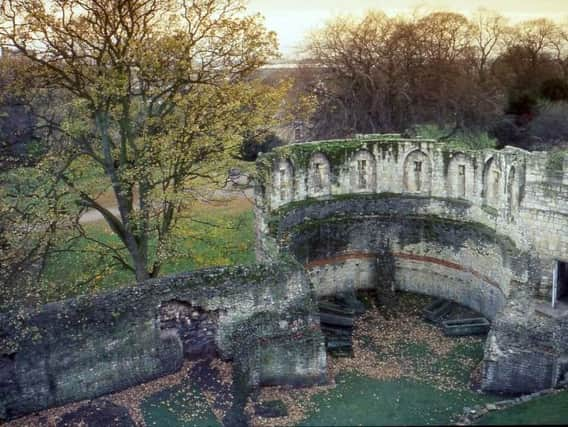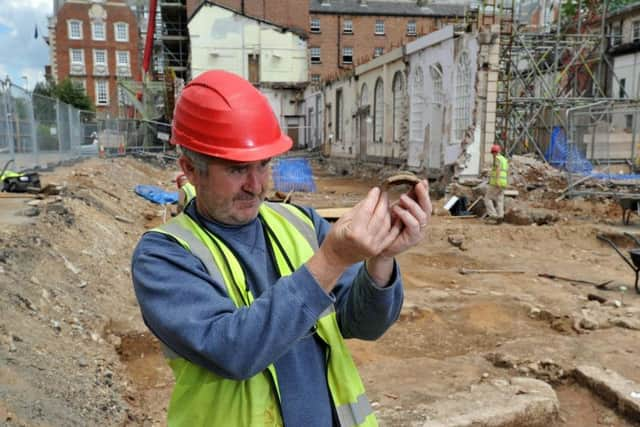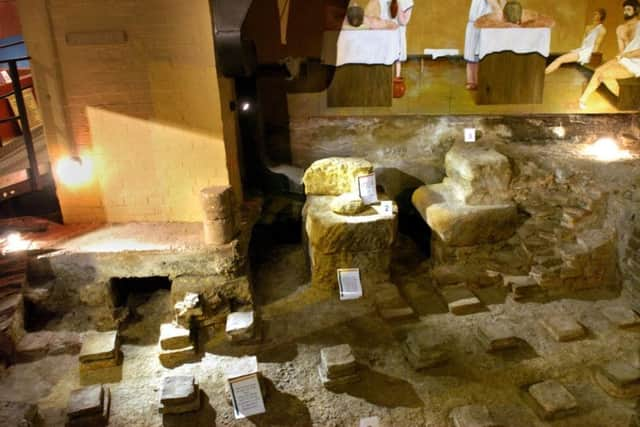The incredible Roman remains discovered in modern York


It was a military stronghold, an administrative centre and a home of emperors.
Thousands of years later, residents of York now barely raise an eyebrow when yet another set of Roman remains are discovered on a building site.
Advertisement
Hide AdAdvertisement
Hide AdBiggest archaeological dig in 40 years will uncover new Roman quarterThe city is built on so much history that these stunning finds have become par for the course.


Its Roman heritage will be celebrated with the opening of a new visitor attraction and archaeological dig site on Rougier Street, close to the original crossing of the River Ouse.
These are some of the most significant Roman discoveries in York:-
The Roman sewers
The city's Roman sewage network was excavated in 1972, when contractors working on Church Street revealed a network of tunnels. They were later identified as the drains built for the Roman bath-houses. Gaming counters, beads and coins dating from the Roman period were all found at the site.


The Roman road beneath Treasurer's House
Advertisement
Hide AdAdvertisement
Hide AdMany of the old Roman roads in York were built over as the centuries progressed. One was discovered 18 inches beneath ground level by a plumber working in the basement of the Treasurer's House in 1953.
The Roman passageways underneath York Minster
In 2012 a section of Roman road was found beneath the undercroft of York Minster - it's thought to have been part of an old backstreet that ran behind the Basilica, the building that once stood on the Minster site.
The Roman skeletons under a hotel swimming pool
In 2018, sixty Roman skeletons were found by builders renovating Newington Hall, near the Knavesmire.
The 1,800-year-old skeletons were uncovered from the site of what had been the hotel's pool, and are believed to have been buried in an extension to the Roman cemetery on nearby Trentholme Drive which was excavated in the 1950s.
Advertisement
Hide AdAdvertisement
Hide AdThe Newington Hotel graves were shallow, leading to archaeologists to suspect that they had been damaged by medieval ploughing of the land and construction in later centuries.
The bodies includes men and women of all ages and of a similar social standing and date from the second, third and fourth centuries AD.
Objects including a jet pin were found nearby.
The headless Roman gladiators
In 2005, the graves of more than 30 decapitated Roman men were found in the Driffield Terrace burial ground.
It sparked a huge mystery over their identities - were they gladiators, prisoners or victims of a ritual?
Most were found under a garden before a patio was laid.
Advertisement
Hide AdAdvertisement
Hide AdThe removed heads were placed in odd positions – between knees, on chests, or down by feet.
Further investigations revealed they were all men – aged 20-40 – who had been in good health. None was local. Dental examinations confirmed they came from as far afield as Africa, Europe, and the Mediterranean.
BBC Timewatch experts later determined that they had been beheaded while still alive.
The hidden tunnels and passageways underneath YorkThe Roman baths
Advertisement
Hide AdAdvertisement
Hide AdThe visible remains of York's Roman military bath-house are underneath the Roman Bath pub on St Sampson's Square, where the caldarium can be seen. It was excavated in 1930. In 2011, the site of the public baths was excavated, underneath an old railway station.
The Roman sarcophagi beneath the station
Another burial site was found beneath York Station and was thought to have been a cemetery. There were major digs there in the 1840s and 1870s. Several sarcophagi were unearthed, including those of named high-profile citizens.
In 2009 a suspected gladiator skeleton was found underneath the Yorkshire Museum.